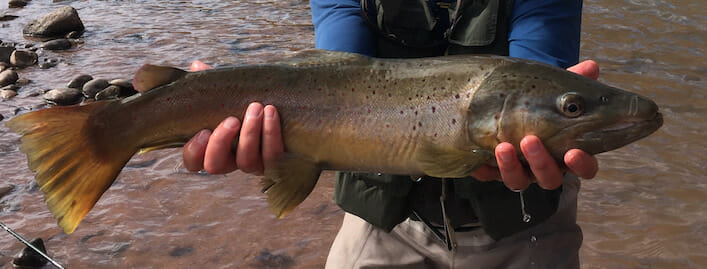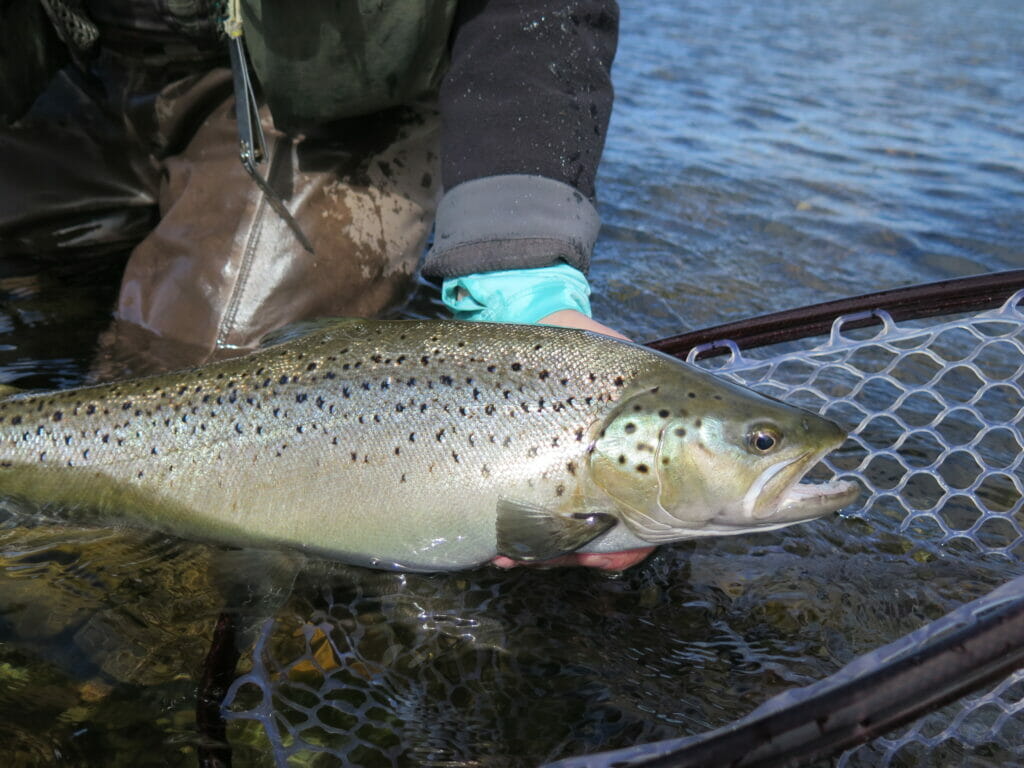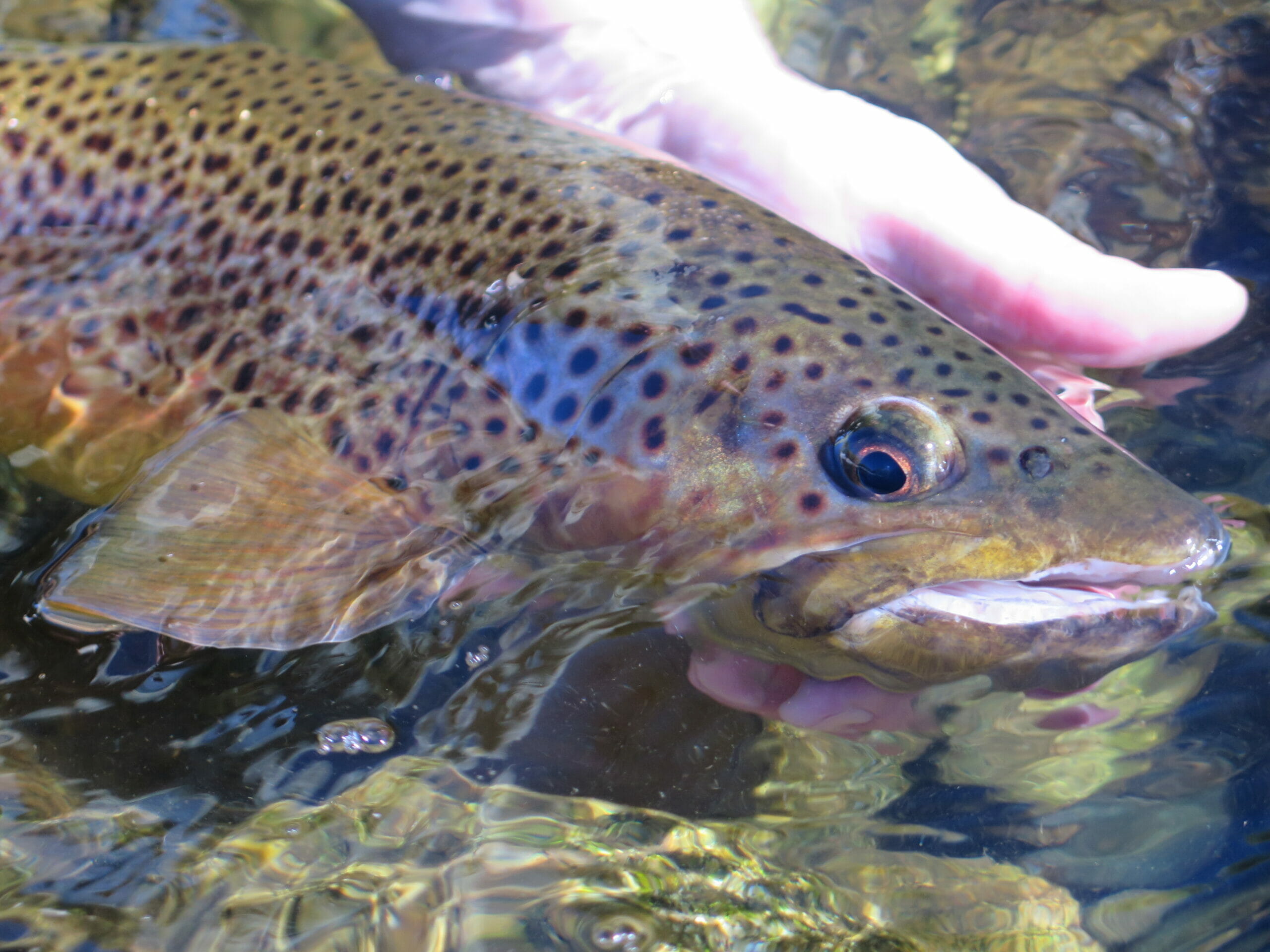There are billions of reasons to love trout, their fickleness bordering on intelligence, their powerful reluctance to surrender in battle, and their impeccable taste in house and lot. The way trout look is enough by itself.
This latter attribute expresses itself throughout a trout’s life. Baby trout are like jewels, their scales and inquisitive eyes shooting sunshine in every direction. The adolescents slash at dry flies as though yearning to show off bodies painted like hot rods.
Big trout are simply handsome. Like specimen dogs, they appear as muscle upon muscle, seemingly rippling when at rest. Of course I’ve never seen a trout in this full flex I describe, but I’ve felt in many a large fish the unmistakable essence of heroic physical potential, even as I gawk at the play of color and light across its body. There’s something square-jawed about a big trout, the equivalent of a dimpled smile and curves in all the right places.

Unlike humans, trout only grow more beautiful with age. I know, I know, beauty’s on the inside, but come on. We are all aware of growing older and should be able to admit to being bothered by it sometimes. If not currently living in it, many of us can remember a time when gazing into a mirror was not only a tolerable experience but, if only on special occasions, a pleasant one. And as constant Zoom meetings keep reminding us, there comes a season in life when looking at one’s own face should be undertaken as infrequently as possible. For some, this is not a tall order given that a mirror’s main utility has become checking for things that weren’t there the last time we looked, the potential cancers, random hairs and the various hanging nuggets of como se llama.
I tend to romanticize on this subject simply because some of my very best friends have been trout. Outside the stocker world, I have never seen a trout that wasn’t perfect.
Toner Mitchell
As far as I can prove, trout don’t have this problem. Their grace just keeps going, or as the case may be, tailwalking and sipping mayflies through our waking and sleeping dreams. I’m biased to be sure. I tend to romanticize on this subject simply because some of my very best friends have been trout. Outside the stocker world, I have never seen a trout that wasn’t perfect.
To have never seen something, though, simply means that one hasn’t seen it, not that it doesn’t exist. Trout without their makeup on certainly do exist, and in no smaller proportion, I imagine, than any other creature living by its wits in a heavily human-altered environment. The snaggle-toothed trout just don’t get out as often as in their heyday. They lie at the bottom of deep pools, under boulders, banks, and logs, having been lucky thus far to have escaped an osprey’s talons, avoided irrigation ditches, or thought twice on some almost fateful night when a devil Panther Martin fluttered past.

A couple Februarys ago, I caught a very large trout on the Rio Chama. The current I was drifting was barely moving, and it was one of those deals where your brain says, “No,” but your arm says, “Why not?” and ends up being correct. Within one head shake I knew I was into something serious, yet the fish was in the net within a minute. I remember it being quite early in the morning and bitter cold, which is how I justified the less than epic fight from a brown trout whose tail matched the spread of my hand.
I didn’t catch him on a six-dollar streamer, a hatch-matching emerger or a precious Euronymph. I caught him on a size 12 bunny leach. I don’t know what he took it for, maybe just a bunny leach; his mouth, into which a beer can would have fit, had certainly chewed on more difficult objects. I would also not rule out that he might’ve known the smell of rodent skin all too well.
He fought the way he didn’t because it was the best he could do in his winter years. Yes, he was gorgeous, but mainly in an inspirational way, because of the ribs that showed, the scars on his skin, the odd bulges and torn fins and the eyes that had seen heaven knows what. A bite to eat or just a moment in the sun now and then, old trout like this guy know what they want and what they don’t want.
Or knew, anyway. I doubt he’s still alive, but maybe he’s under a rock somewhere watching the world go by.
Toner Mitchell is TU’s New Mexico water and habitat coordinator. He lives and works in Santa Fe.



